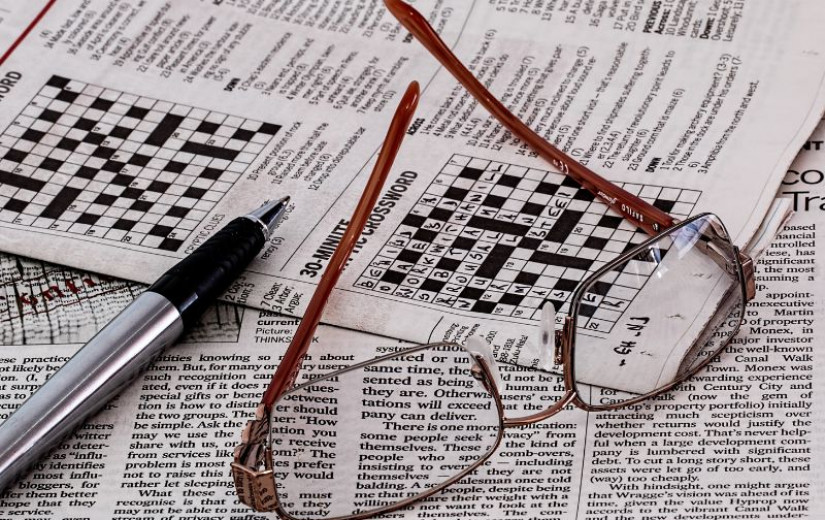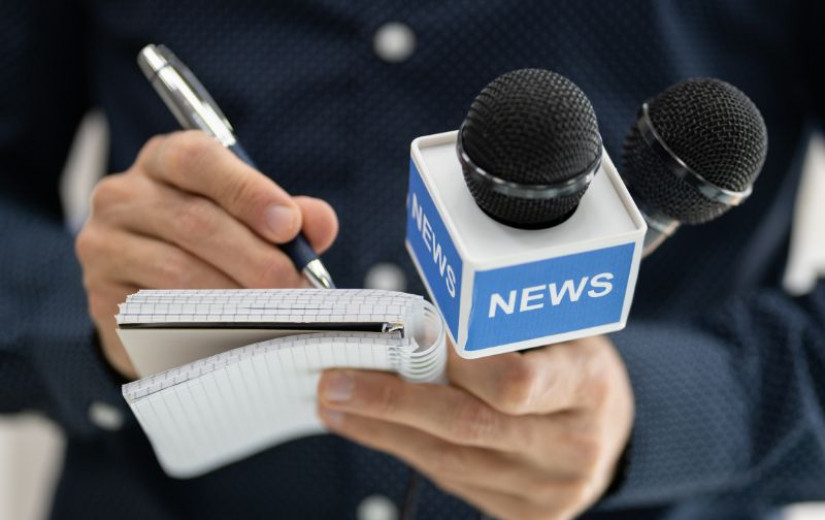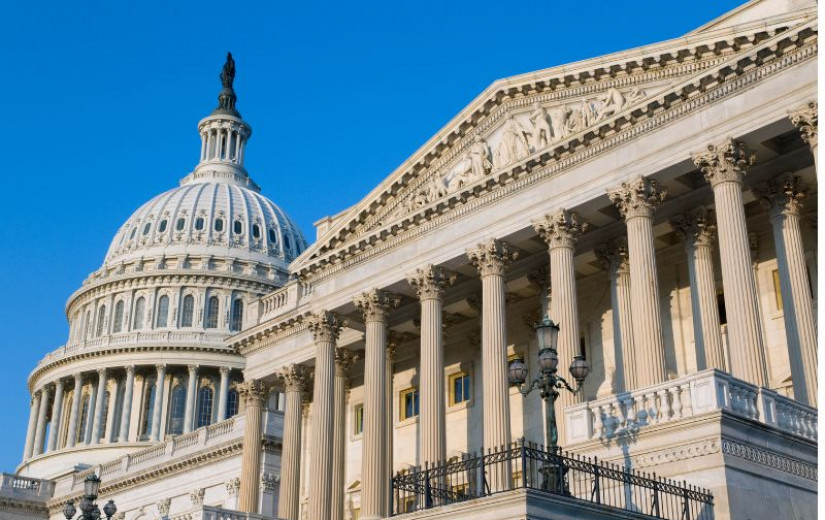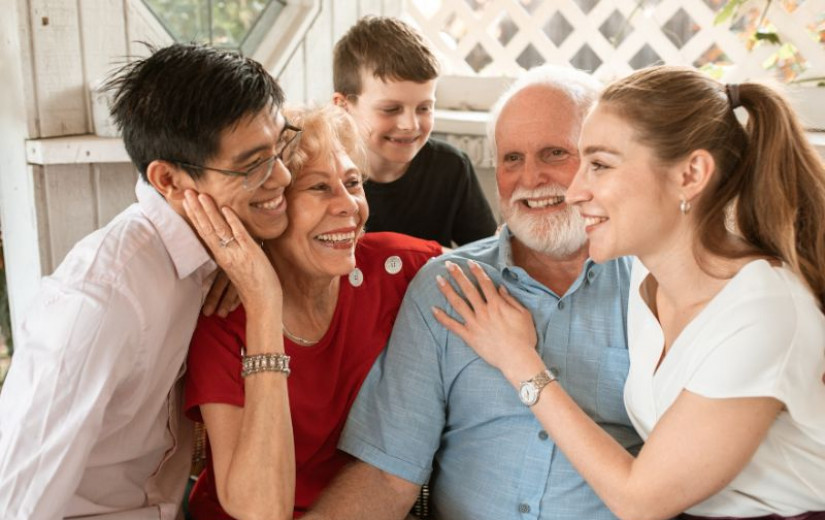
In her newest series of works on view now in New York, Tehran-born, Toronto-based multidisciplinary artist Mahsa Merci unifies her signature sublimely tactile oil painting technique with hazy, dream-like gestures that disguise, transform and shift perspective.
Merci’s magnetizing portraits—which are part of an exhibition called Wet Light in Midnight put on by the Wolf Hill residency program that she just completed—are described by the artist as inscrutable self-portraits; yet, she explains further, they’re also incorporeal composites of the queer experience.
Through her enigmatic practice, Merci communicates the concepts of erasure and resilience by mining both personal and public matters. Her portraits act as a refracted mirror for the universal, yet diverse, experiences she has discovered by finding queer community in Canada and beyond. In the case of the work “Wet Light in Midnight (Artist’s Portrait),” I mean mirror quite literally, as here Merci’s painted figure stands boldly between two panes of painstakingly cut mirror shards evoking the gorgeously graphic Iranian glasswork made famous by the country’s mosques.
While she first embarked on her creative career as a graphic designer, Merci’s practice now includes sculpture, photography and drawing. But it’s her range of recent paintings that have been her preoccupation of late—the unimaginable hours spent crafting these striking scenes laden with oils so dense that each subject’s nose protrudes and their hairs stand on end, with some faces disfigured by increasingly confident swipes across each painting’s panel.
In working on them, Merci homed in on a new technique to amplify the themes of identity, self-determination and violent discrimination that are the undercurrent of her electrifying oeuvre.
After the jump, read our full Q&A where she shares more about her fearless practice, and how moments of ambiguity can still have power.
�
How has your practice evolved in terms of materiality, and the techniques you explore?
I began my art practice in Iran, experimenting with various mediums such as collage, sculpture, and photography. Over time, I gravitated more toward drawing and painting, and it was through painting that I felt a deep sense of personal discovery.
I don’t have a formal academic background in painting—only a few months of foundational training in a private painting class in Iran.
As for sculpture, I am entirely self-taught, learning through conversations with professionals and by researching extensively, including online resources. In that sense, my practice is highly intuitive and driven from within.
And what brought you to the painting techniques you’ve been using more recently? There’s so much rich texture to your work.
I used to work with acrylic paint, but one day my mother gave me some oil paints from her youth; they were still fresh! I started using them, and thought, oh my god, this is my medium. This is what I’ve been looking for.
I remember that my early portraits had a sense like the hair, the nose, and the lips were emerging from the canvas, so I started to layer on the oil paint to create that effect. I used this technique predominantly for a couple of years, until about 2023. Now, I’m trying to use different techniques in different parts of my paintings. It makes me more excited, because when I’m doing that, I feel very involved in the painting. And, different techniques can carry different ideas, and it excites me to combine them all.
Around a year-and-a-half ago, I was painting an ear. I didn’t like the colour, and I scraped across the paint. I really loved the colours left over on the surface. I took a picture of it, and then I applied this technique, little by little, to other paintings. And now in most of the paintings I’ve done recently, you can see this scraping technique in my portraits. It feels like the portrait is like being lost, or vanishing. There’s a dreamy feeling to it.
Definitely. How does this relate to the themes of queer identity that you examine in your pieces?
When I was in Iran, I was focused on highlighting Iranian queer people, and I really wanted to document them like a photographer; there is extremely limited documentation of queer people in our history. I wanted to focus on their existence, rather than ignorance.
Then I came to Winnipeg, Canada to study a Masters of Fine Art at the University of Manitoba. I continued my practice with this subject matter. It was during COVID lockdowns and restrictions, so I couldn’t go out to meet many queer people but I was able to find community through social media; people that I could talk to about my work. And I found that there are so many folks throughout the rest of the world that have the same feelings of fear and trauma that Iranian queer people have experienced. It’s like we all experience the same things, but in different ways and on different levels based on family and culture and politics. I’ve met so many people who live outside of Iran who are afraid to talk about their queerness to their family. So, I began to expand my portraits to include non-Iranian queer people as well.
When I’m talking to someone about painting their portrait, or I’m in the process of creating it, it’s kind of like a therapy session for both of us. I try to paint their portraits in a way that presents their journey, and all the stories that happen in their life, through the painting.
I also feel like I’m painting myself when I’m doing these portraits. I recently read a book about Francis Bacon’s Papal portraits, and in it, Bacon talks about portrait painting and says that the practice is really self-portraiture for the painters. That really resonated with me.
After painting different queer people until late 2023, I felt something was missing in my practice. I wanted to be fully myself in the paintings; the chapter of documentation was going to close for a while. Doing this kind of portrait work was like testing the water for me; that feeling of going into the ocean and putting your legs deeper to see what the water is like, and then little by little, you have courage to immerse yourself.
What did that mean for you personally and artistically?
At a certain point, I began to wonder whether I should start making work about everything unfolding inside me. I remember standing in front of a blank panel on the wall, telling myself, “Just paint. Don’t think. Just begin.” And I did. That simple gesture marked a shift in my practice toward a more introspective and emotionally driven process.
Currently, my work is centered around the inner journey of a queer person from the moment they first sense something different within themselves, through the complex process of realization, and eventually, acceptance. I’m particularly interested in that moment of ambiguity—when one feels something is changing inside, but can’t yet name it. This journey is rarely linear. It moves through a range of emotional states: fear, confusion, trauma, melancholy, fantasy, desire, and ultimately, self-awareness. In my recent works, I’ve tried to visually express these nuanced emotional shifts.
That’s why, in contrast to my previous projects—where the focus was on portraying queer individuals as they are, emphasizing their presence and existence—my current work prioritizes the emotional landscape they navigate. The figures in these paintings are not literal portraits of others, nor always direct representations of myself. Some are self-portraits that don’t resemble me, while others are directly based on photos, I’ve taken of myself and edited.
They are constructed from fragments: sketches based on people I’ve observed on the street, characters from books, films, social media, and personal memories. Even when the figures appear abstracted or fictional, they are fully “me”—a reflection of my interior world, reshaped through the act of painting.
How does this relate to broader themes you’re looking at in your work?
At the core of my practice is the concept of fear—how we confront it, and more importantly, what gives rise to it. What systems produce and reinforce this fear? Is it tradition? Patriarchy? Culture? Religion? A queer person navigating their identity often passes through a spectrum of intense and conflicting emotions: shame, confusion, resistance, longing, and isolation.
This emotional journey gradually moves toward clarity, toward light—toward the moment of embracing one’s true self. In my recent paintings, light functions as a recurring metaphor for self-awareness, representing that hard-won emergence from fear into acceptance.
This new work you’re talking about is part of a currently running exhibition at Wolf Hill in Chappaqua, New York, which is connected to a residency you recently completed. Tell me more about this experience.
I was invited to do a residency at Wolf Hill in January 2024. I met its co-founders, Ethan (Rafii) and Jonathan (Travis) about five years ago, and they’ve been very supportive of me in different parts of my life. Because of the Visa and immigration process in the U.S, I thought it would be tough for me to do a seven-month residency there; but they told me since I have a studio in Toronto, that I could complete the residency from there and the work could be shipped for the exhibition. Usually, this annual exhibition takes place at Wolf Hill’s property, but this time they are using a space in Tribeca.
Wow, that’s amazing. So many fantastic galleries there… Congratulations. And there’s a book coming out that’s linked to the residency as well?
Yes, there is a book that has been produced in connection with the residency. It includes all the works I created during the residency for this exhibition. In addition, the graphic designer I collaborated with, Sam Kashmiri, suggested that we could expand the book to include some of my earlier works—such as drawings, sculpture, photography and other experimental practices from recent years. The intention was to present a broader view of my artistic journey. The book offers a more comprehensive insight into my practice as a whole.
Also, Saša Bogojev, a fabulous curator who interviewed me for the book, is one of my biggest supporters; Noor Alé, a brilliant curator who contributed an insightful essay to the book, has also been incredibly supportive and instrumental throughout the process, and Jonathan and Ethan, founders of Wolf Hill have contributed a very beautiful text. I myself contributed a personal reflection on my journey over the course of several months during the residency.
Let’s talk more about your practice and the future. What new themes or techniques are you interested in experimenting with?
New ideas have been emerging in my practice, particularly around the scraping technique I’ve been exploring. Recently, I’ve been drawn to the sensation of identity being stripped away—an erasure that feels both personal and political. This was triggered by a memory of a speech given by the former president of Iran about a decade ago, in which he publicly declared that there are no gay people in Iran. I was struck by the violence of that statement—how a single sentence, spoken on an international stage, could attempt to erase an entire population.
This moment has stayed with me and has started to inform my work more directly. It raised questions I continue to explore: how can a person, backed by systems of power—culture, tradition, patriarchy, religion—attempt to make others invisible? And yet, despite those attempts, we are still here. My recent thinking has focused on how I can translate that feeling of erasure into form, how to visually represent what it means to resist being made invisible.
On that note, how are you also staying optimistic and creatively activated during this time?
I’ve often wondered whether art can truly shift the world—or if that’s too much to ask of it. But what if one person stands before my work and begins to question? What if something stirs quietly within them—a thought, a doubt, a new way of seeing? Art, to me, is a fragile but vital link in a larger chain of awareness. And perhaps, through that chain, a single mind begins to shift. That shift might ripple outward—touching a friend, a family member, a community.
I create with the hope of reaching someone—especially the person who feels unseen, uncertain, or erased. If a queer viewer, in the midst of struggling with their identity, stands before one of my paintings and feels less alone, if they think maybe I’m not the only one, then something has already begun. That quiet recognition might spark a conversation, or simply offer comfort. And in that moment, perhaps art does not change the world—but it reaches one person. And that, to me, is enough.
—Q&A by Odessa Paloma Parker (@odessapaloma)




















